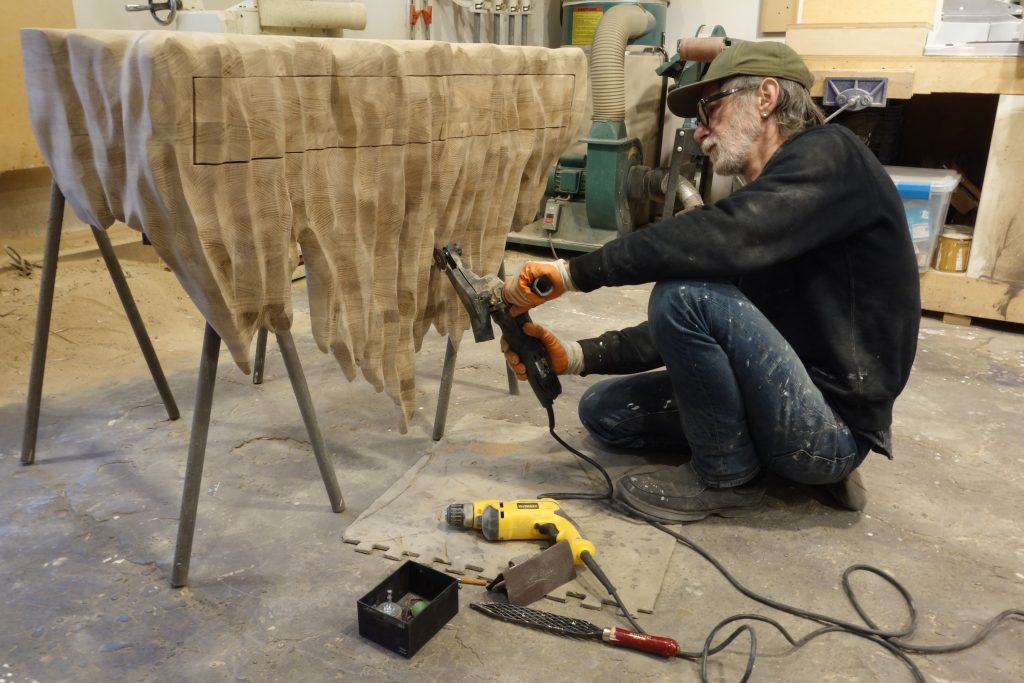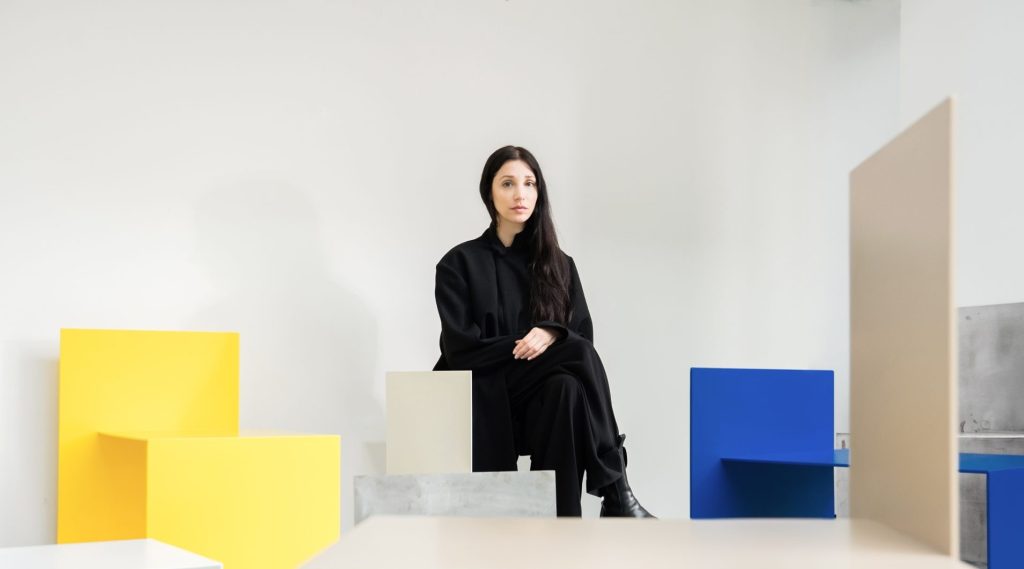
Sabrina Merayo Nuñez: A Visit to the Mothership of Bioplastics In New York’s East Village
In the heart of New York City, surrounded by the vibrant streets of East Village, lies a hidden gem. The “Mothership,” as Sabrina Merayo Nuñez affectionately calls her studio. A discreet door, easy to miss in the urban tapestry, opens up to a world where art and environmental consciousness merge in harmony. Inside, the warm glow of bioplastic sculptures creates a sanctuary of light, each piece set against a canvas of grey that stretches from floor to ceiling, making the pieces not just stand out, but speak to one another.
Sabrina, an artist with roots in Argentina now planted firmly in the cultural soil of New York, has navigated a unique path through the realms of bio-art, biomaterials, sculpture, and design history. Her journey from exploring a vast array of artistic disciplines to the exploration of functional art is a testament to her relentless quest for meaning and impact through material expression.
At the core of Sabrina’s artistic exploration is her groundbreaking work with collagen-based bioplastic—a material that marries the artist’s dedication to sustainability with a vision of a world where technology and nature are not at odds but in dialogue. It’s this spirit and commitment to a better future that makes Sabrina one of today’s most pioneering figures for those at the intersection of art, design, and eco-awareness.
Let’s embark on a journey into the world of Sabrina Merayo Nuñez, where each piece tells a story of innovation, sustainability, and the seamless weave of human ingenuity with the rhythms of the natural world.










What’s your cultural and educational background, and what made you move into working with functional art?
I actually have an eclectic background. I am a visual artist with a background in bio art, woodworking, furniture and applied arts history, and antique furniture appraisal. I started making sculptures, but there was always a huge interest in functional art because of the interaction that is supposed to happen with the viewer. There is something very magical for me about how an object can be created to satisfy some kind of need, and how we translate that need into forms, materials, and meanings with which we interact both physically and intellectually. I also think that the nature of needs and how different cultures choose to fulfill them is an amazing field to explore and learn more about humanity.










You have previously been committed to wood as a material – How did your interest in biomaterial arise?
I have always been interested in materials and how to work with them. For a long time, I studied applied arts and all kinds of handicraft processes in the fields of design and art. I am a great follower of the old masters’ recipes for making paint and glues. I am fascinated by the alchemy behind and direct contact with natural materials. Basically, the knowledge you need to acquire about a natural element like wood to be able to work with it (when and how to cut it, how to dry it, which tools are best for each type of wood). In other words, I am fascinated by the relationship between the natural material and the human hand.
I like to experiment and come up with recipes or ways of using materials, so when I discovered bioplastics it seemed like a material with great potential. I started to try the recipes I found on the Internet, but I realized that they were very weak. I started to break down the components and tried a couple of other variations until I adapted a recipe that was suitable for my needs.
As I said, I have a background in appraising antique furniture and applied arts. I was fascinated by the extremely refined skills and material knowledge required to make these pieces. We used to do a deconstruction of the physicality of the object to determine when and how it was made in order to value it for the market. We take some samples and use some scientific methods such as X-ray imaging and chemical analysis to better understand how the wood surfaces were preserved. In this way, we know the provenance of the piece through the traces of the hand, the tools, and the materials. The materials used for conservation, just to name a few, could be beeswax, shellac (made from a secretion of a tree insect), natural oils like tung, and handmade paints and varnishes. When I looked at the contemporary handmade bioplastic recipes, it took me back to the ancient techniques and I began to put all this information together until I got the material I was looking for.









Do you see yourself as an artist or designer, or something different?
I’m more on the side of the artist in terms of how I approach my work. I definitely cannot define myself as a traditional post-industrial designer. Anyway, I feel that the boundaries are fortunately very blurred now. And there are no hard lines between disciplines anymore. I am happy about that because it allows me to flow and take things from different fields (also science) and put them together somehow. Being playful with function, use, materials, and research.












With your objects, what is the main story you would like to tell?
Objects are great ‘time tellers’. I think we are going through a period of redefining big concepts like nature, technology, humanity, and science. There is something about this transitional moment that I hope my objects can tell. This is also why I use a lot of these “transitional forms” (as I used to call them) in my work, like cocoons, chrysalises, etc., and I mix them with electronic sensors and biomaterials. Because I feel that we are transitioning to new ways of understanding the world, and our everyday objects should reflect this overlapping state of things in a poetic and/or factual way.







How do you hope your work will make a difference in people’s lives?
Let’s consider that we have created a world that is already difficult to inhabit. Think about the speed at which technology and science can have an impact on the way we live our lives. How the virtual has taken a leading role in our lives and interactions with other people and objects. I’d like my work to function as a small reminder of that. As disruptive devices that underline the artificiality that absolutely regulates contemporary interaction with the world, which paradoxically always tries to look as if it is naturally given. And of course, I also like them to work as simple lamps.












What are your future aspirations for your practice?
At the moment, I am working on increasing the sensitivity of the sensors and thinking in terms of small capsules with simplified shapes, and developing reusable molds, also made of bioplastic. I am testing
a new formula for a kind of bioplastic memory foam to be used in chairs and stools. I’m also getting some work ready for the Milano Design Week, a solo show in Buenos Aires, and the London Design Festival in September.























